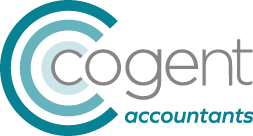There are several different ways you can account for VAT. Which VAT scheme is best for you? Choosing the right scheme is dependent on your business and circumstances. In this article we are going to look at the Flat Rate Scheme but if you would like any further advice on any of the other options please contact us.
There are 4 different options available:
- Standard Accounting
- Annual Accounting
- Cash Accounting
- Flat Rate Scheme
As a contractor or freelancer we recommend that our clients consider the Flat Rate Scheme (FRS) if appropriate. This article covers how the Flat Rate Scheme works and why it can benefit you as a contractor.
What is the Flat Rate Scheme?
The Flat Rate Scheme is an incentive scheme introduced by HMRC in 2002 as a way for small businesses to simplify their sales and purchases records. As discussed in last week’s article, VAT is a complex area of tax and can be time consuming working out what you owe to HMRC. In order to simplify this process and lessen the burden on small businesses (and HMRC’s own administrative burden), the Flat Rate Scheme was set up.
How the Flat Rate Scheme works
HMRC explain that the Flat Rate Scheme “…allows a business to apply a fixed flat rate percentage to their gross turnover to arrive at the VAT due.”
With this scheme, your company charges its customer 20% VAT on every invoice but pay over to HMRC the amount of VAT collected at a lower rate. The difference between what the company collects and what it pays to HMRC is additional income for the company.
So instead of having to calculate the VAT on the difference between sales and purchases, VAT is calculated through applying a single flat rate percentage on the gross turnover.
The flat rate percentage varies on what sector your business is in. The HMRC website has a full list of these sectors with their corresponding flat rate percentage. Typically the rate is between 12% – 14.5% (depending on the type of work you do).
Can everyone join the Flat Rate Scheme?
If you have a VAT taxable turnover of no more than £150,000 a year, then yes, you can join the scheme. You can join the scheme online or by post using form VAT600 FRS. As a client of Cogent we can handle this for you.
Benefits of the Flat Rate Scheme
- It is designed to be a simplified scheme and thus easier to understand
- Less admin burden – which is particularly useful for busy contractors who are working and also running their own businesses
- It can be helpful for cash flow as you know what percentage of your takings you will have to pay to HMRC
- If you are in your first year of VAT registration you can get a 1% reduction in your flat rate percentage until the day before your 1st anniversary of VAT registration
- You still charge your clients 20% but pay back a smaller amount to HMRC, the difference between the two is extra income for the business
Downside of the Flat Rate Scheme
- If your VAT taxable turnover is more than £150,000 per annum you can’t join the scheme or once your turnover exceeds £230,000 you have to leave the scheme.
- Once out of the scheme you cannot apply for re-entry for a full 12 months.
- If you use the Flat Rate Scheme you can’t reclaim VAT on purchases (except in certain circumstances i.e. if they are a capital asset costing more than £2,000.00 (inclusive of VAT and the full cost must be on one invoice and if the asset is still in the business on the date of registration)
Note: A capital item or fixed asset (as it is sometimes referred to) can be equipment, machinery, computers, or cars, or anything else that has a high cost and that is going to be used in the business for more than 12 months and is not intended for sale during the normal course of business.
Example of how the Flat Rate Scheme works:
You bill your client annually for £100,000, adding VAT at 20% = £120,000
You work as an IT Consultant, so your VAT Flat Rate is 14.5%
Your flat rate payment will be 14.5% of £120,000.00 = £17,400
You would be better of by £2,600.00 per year if on the FRS scheme. (In your first year of trading including the 1% discount, would be £3,800).
Things to consider
The benefits of using the Flat Rate Scheme often outstrip the downsides, however we recommend that you speak to an accountant first before committing to it.
If you do join the scheme, there are still things to consider, such as:
- You still need to show VAT of 20% on each sales invoice
- If you are business with a lot of VAT chargeable expenses, then FRS might not be for you
- You still need to complete a quarterly tax return
- Even though it is designed as a simplified scheme, you still need to keep accurate records
Further information is available in our download Flat Rate Scheme Explained, download it now!

